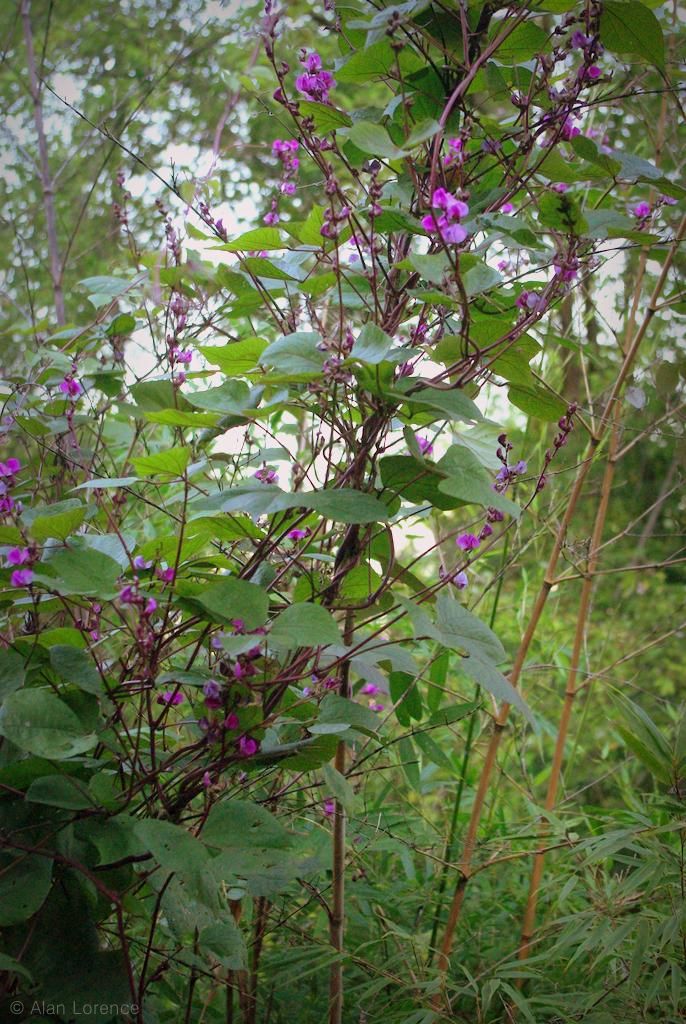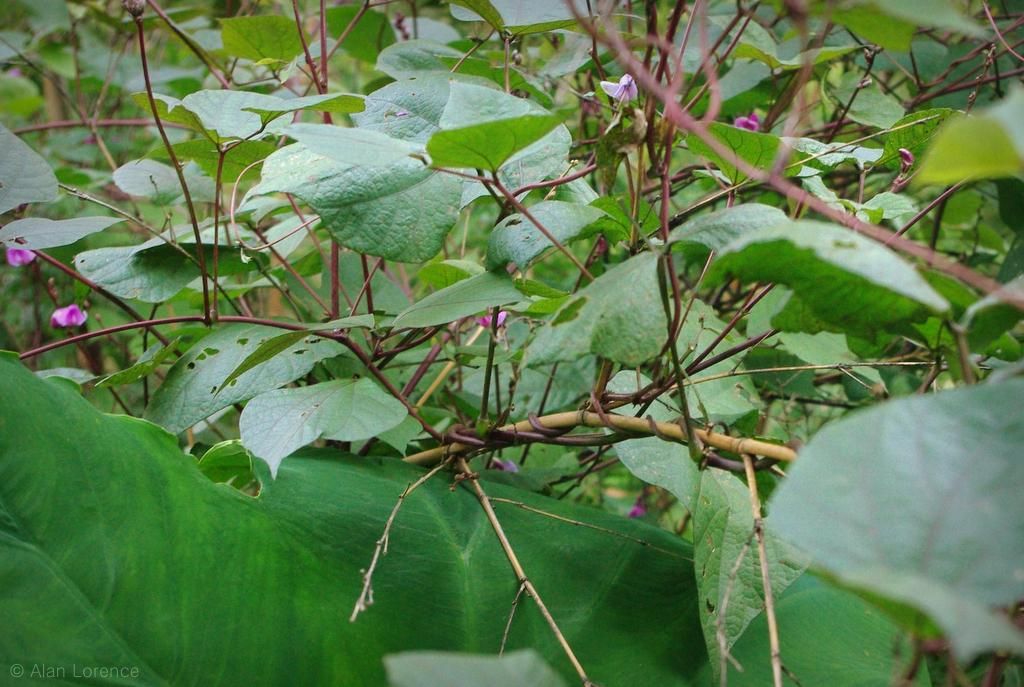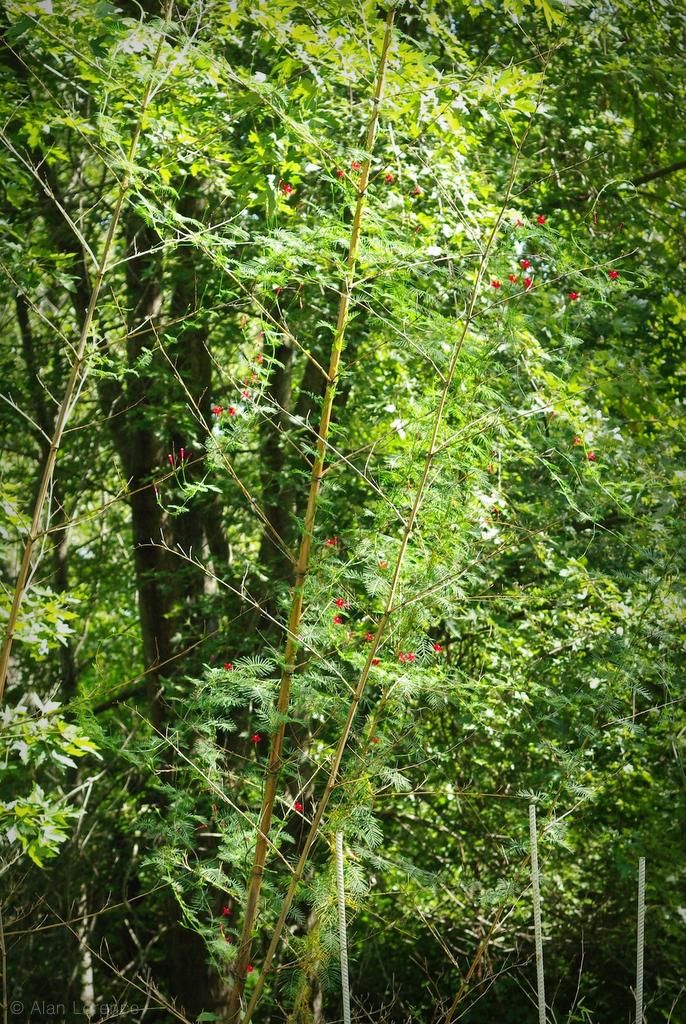Vines to the rescue... almost
Although it's been ten months since the polar vortex reminded us cold-climate gardeners that we shouldn't get too comfortable with mild winters and caused quite a bit of bamboo damage in my garden, I still have reminders of it: the dead bamboo culms that I left on three or four of my plantings.
Instead of removing them I left them in place not just for the support they gave to emerging culms, but with the plans of letting annual vines climb up them, natural trellises that would add vertical color with little-to-no effort on my part.
This plan was in theory great, but in practice not so much. The first problem with this plan is that constructed trellises usually are attractive and at the very least appear to have a purpose, so seeing them empty for a few months is not a problem. Vines take a while to get growing, and in my garden they really don't take off until August it seems. That's three months of dead bamboo culms that are visible.
The second problem is that most vines are quite heavy. As sturdy as bamboo culms appear to be, they're also quite flexible -- especially if they were only a year old before dying (they take 3 years to reach full strength usually) -- so they bend down under the weight of the vine.
I may have been able to fix this by paying more attention and guiding the young vine onto the thicker culms, but letting the vine figure things out didn't really work. It would have been nice if it had chosen this culm instead:
The final reason that this wasn't a great idea: branches. Those dead culms look fine -- heck, people add bamboo canes to their gardens all the time -- but those little branches make things look messy.
Some of them did a pretty nice job, like this cypress vine:
It climbed the thickest dead Ph. dulcis culm, and although this next photo doesn't show it too well, gave the hummingbirds something to visit 15' (4.5m) up in the air! (Look for the red blooms)
It was quite nice when the lighting was right.
So when the arctic chill kills more of my bamboo culms this winter (I'm preparing myself mentally for it to be an actuality so I'll be pleasantly surprised if it doesn't happen) I'm most likely not going to try the vines experiment again. Maybe I'll cut the culms, remove the branches, and just make teepee trellises instead.
Although knowing me I'll probably just leave the dead culms and try again, as it's less work.
.










It was good to find out this year if it's a good idea. You can decide again next year :)
Or you could cut the branches and paint the culms red or orange and call it an homage to Floramagoria. I like your idea of vines and am sorry that it didn't work as well as anticipated. There's always next year, right?
Interesting that we had the same thought, with almost exactly the same plants! I covered a dead (well, to the ground) fig tree with hyacinth vine and cardinal climber and let them fight it out. It worked out fairly well, with both growing well and blooming, first the cardinal climber and then the hyacinth vine; the problem is that the latter was more aggressive than I expected and got into the lines overhead and has now reached the telephone pole behind my house! That means I'll have to get up on the garage roof to clean up sometime this fall.
http://dctropics.blogspot.com/2014/08/what-to-do-with-dead-tree.html
Peter: nice thought, but... it could be fun to watch me trying to paint those culms. Unless you meant cut them down first. :)
DC Tropics: Hyacinth bean vines are much easier to clean up after the winter, when they've become dry and brittle. I'd take off the easy stuff and leave the tough stuff for the spring if possible.